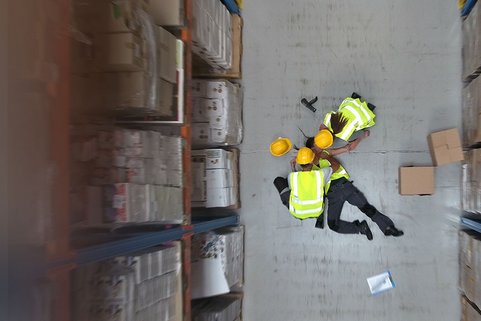3 minutes05/16/2017
Written by Timo Kronlöf
While it would be nice to believe that the goal of zero accidents is achievable in any company, realistically, it's not. At least not if your LTIF is above 20 and you dream about hitting the zero mark this year. In fact, it’s probably time to wake up. To be more straightforward, I suggest that we as safety professionals shouldn't expect or force people to believe this nonsense.
Let me explain. At some point in the past, and perhaps inevitably, something went wrong in our communication. Initially, the concept of zero accidents came from highly respected and pioneering safety scientists like Erik Hollnagel, James Reason and Jorma Saari. But unlike in many companies today, the vision was about, not a quantitative goal, but a future without accidents (1). The confusion between a set goal and a broader vision has originated from a wide communication failure that we let happen for too long. Failures are of course human, but I’d say that there has been some conscious choice not to rectify this mishap - a shame for the whole safety profession.
I've seen it happening many times. I've even done it myself. It just makes you feel good when someone has adopted safety as a value, doesn’t it? Maybe you've been working really hard to accomplish a change in thinking, and made a difference in safety culture which you can now hear in the dialect and see in behavior and actions. After this, you hear someone arguing that safety is number one priority and every accident can be avoided, and you can’t help but agree with them. What happens next is that the same person tells a Director that we aim for zero accidents this year. Would you be so petty to point out, 'It's actually not our goal, but our vision'? Well, I wasn't.
No big deal, you might still think, just a small detail. Unfortunately, I really think that this same discussion or similar conversations have happened all over the world, in so many organisations, that goal zero has become a norm instead of what it really originally was - ZAV (Zero Accident Vision) or ‘Vision Zero’. There have also been critical statements and points of view against the whole concept of ZAV from highly respected safety professionals such as Sidney Dekker (2) and Andrew Sharman (3). The criticism arises mainly from counter-productivity issues that ZAV might create, or the wasted resources spent on countering microscopic risks.
This small bias can harm our profession on its mission to achieve safety excellence. Let's come up with a typical example. Say your company had 500 accidents last year, and your CEO is asking you to come up with a plan for reducing incidents. You likely wouldn’t stake your credibility to state, 'Well, I think we can avoid all accidents this year! Our goal is zero accidents.' Rather, you would tell them that you have a plan which requires rigid management commitment to ZAV so that you can tell staff that the company doesn't accept any accidents. Then you could come up with a realistic plan on how to reduce accidents 25% yearly if you can obtain the required resources for your EHS team to implement your strategy. After producing realistic numbers, you'd be able to give a detailed step-by-step plan on how to get there. Now, think a bit further ahead. After 12 months, the CEO comes to you again to ask how you’re doing. You've worked hard and reached 30% reduction in AFR/LTIF, or whichever your lagging indicator is. In the first case, you'd still failed 70%. If you were in marketing, sales, production or any other function, you might even get fired. But since you are a safety guy, you might just be able to help people understand the concept of ‘Zero Accident Vision’, before that happens. Hopefully.



